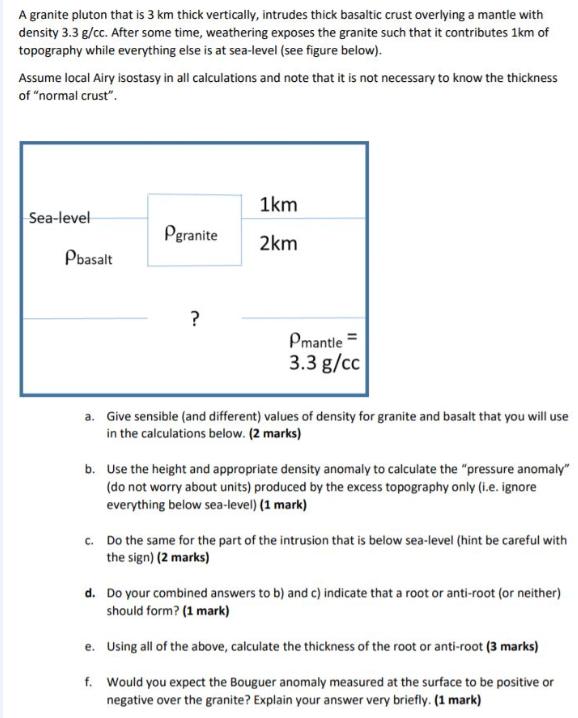Answered step by step
Verified Expert Solution
Question
1 Approved Answer
A granite pluton that is 3 km thick vertically, intrudes thick basaltic crust overlying a mantle with density 3.3 g/cc. After some time, weathering

A granite pluton that is 3 km thick vertically, intrudes thick basaltic crust overlying a mantle with density 3.3 g/cc. After some time, weathering exposes the granite such that it contributes 1km of topography while everything else is at sea-level (see figure below). Assume local Airy isostasy in all calculations and note that it is not necessary to know the thickness of "normal crust". 1km Sea-level Peranite 2km Pbasalt Pmantle = 3.3 g/cc a. Give sensible (and different) values of density for granite and basalt that you will use in the calculations below. (2 marks) b. Use the height and appropriate density anomaly to calculate the "pressure anomaly" (do not worry about units) produced by the excess topography only (i.e. ignore everything below sea-level) (1 mark) c. Do the same for the part of the intrusion that is below sea-level (hint be careful with the sign) (2 marks) d. Do your combined answers to b) and c) indicate that a root or anti-root (or neither) should form? (1 mark) e. Using all of the above, calculate the thickness of the root or anti-root (3 marks) f. Would you expect the Bouguer anomaly measured at the surface to be positive or negative over the granite? Explain your answer very briefly. (1 mark)
Step by Step Solution
★★★★★
3.42 Rating (171 Votes )
There are 3 Steps involved in it
Step: 1
Solution f Bouger anamoly at surface ...
Get Instant Access to Expert-Tailored Solutions
See step-by-step solutions with expert insights and AI powered tools for academic success
Step: 2

Step: 3

Ace Your Homework with AI
Get the answers you need in no time with our AI-driven, step-by-step assistance
Get Started


